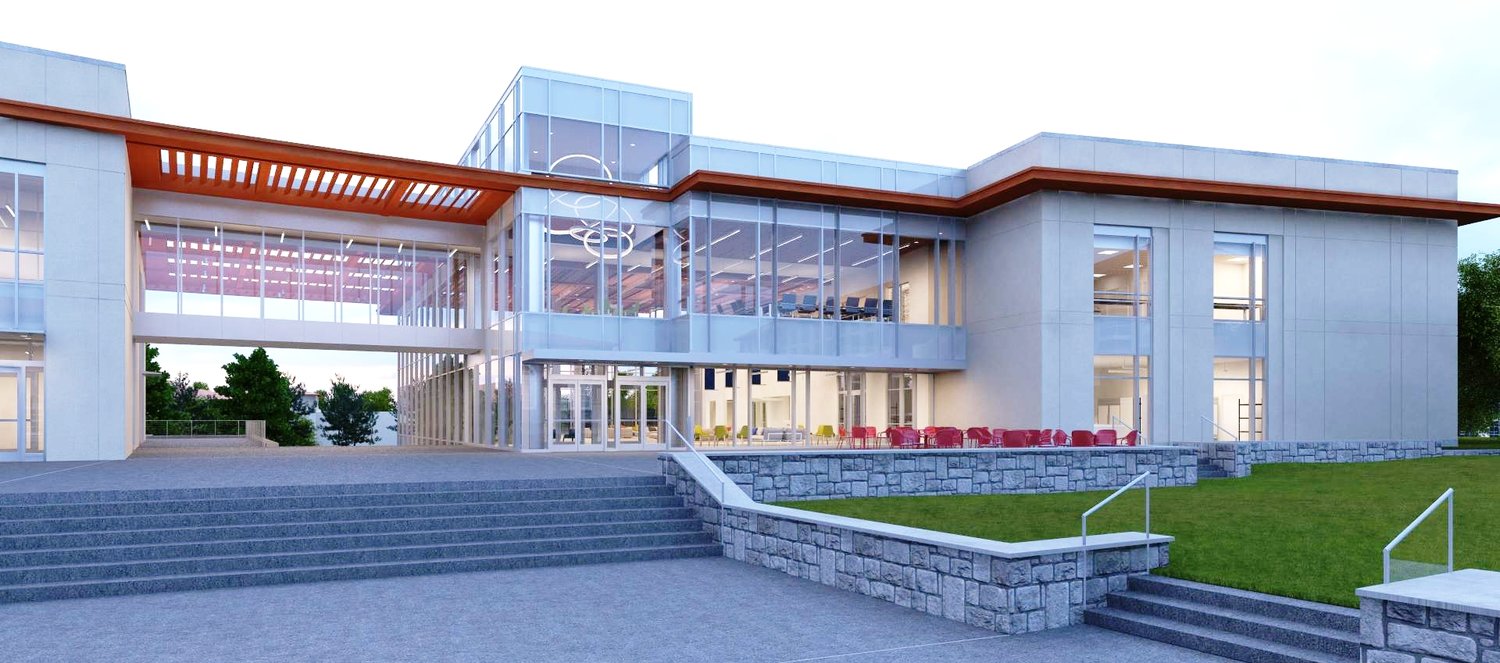By: Madi Mainman Intern, Office of Sustainability Initiatives

The Emory Student Center, opening in May 2019, will be Emory’s most energy efficient building to date, incorporating sustainability features that Ben Perlman, Director of Student Operations and Events, calls “nothing short of revolutionary.” The building’s Energy Use Intensity (EUI), which expresses energy use per square foot of space, is projected to be 59, compared to an average of 120 for similar student centers. The Center is striving for a Gold Leadership in Energy and Environmental Design (LEED) certification by the end of construction.
The development process of the Center began with the hiring of Duda|Paine Architects and Holder Construction Company after a multiple-round interview process. During the interviews, the architects were asked how they would address sustainability challenges and achieve a low EUI. Duda|Paine was chosen due to their commitment to environmental practices which they believe are “inseparable from [their] overall design process.”[1]
Emory took measures before construction to reduce waste during the building process. They partnered with MetroGreen Recycling during the Dobbs University Center (DUC) demolition to ensure that any construction materials that could not be reused in the new center were diverted from landfills. Additionally, Building Information Modeling (BIM) was extensively used in order to reduce waste. BIM lets contractors see a 3D model of the building and all the systems inside, allowing them to identify any system overlap errors and remedy them. Without BIM, system overlap would not be recognized until construction commenced & the error would have to be fixed on site, typically by buying extra material. Identifying system overlaps on the computer allows contractors to identify the correct amount of material to buy and reduces waste and the carbon footprint of the project.
The Center’s most prominent sustainability feature is the geothermal well system. There are 65 wells that were drilled into McDonough Field, with an average depth of 400 feet. The wells will provide approximately 70 tons of heating or cooling, accounting for an estimated 38% of cooling demand and 25% of heating demand for the building and drastically reducing fossil fuel use. This is the first building on campus to utilize a closed-loop geothermal well system. This system works by utilizing the ground’s consistent temperature for either heating in the winter or cooling in the summer, reducing the need for additional steam and chilled water that typically heats and cools other campus buildings. Geothermal energy is not the only renewable energy source of which the Center will take advantage– 32 solar panels on the roof will harness solar energy to pre-heat potable water. The panels will heat approximately 40% of domestic hot water needs for the building.
In addition to using renewable energy sources, the Center has many features in place to reduce overall energy usage. For example, a computerized system will monitor and control conditions, such as temperature and lighting, inside the building. If an area is empty, the system will fully turn off the lighting and the HVAC system will turn down to an unoccupied mode, allowing the building to be more efficient even while staying open late. The building automation system also monitors temperature throughout the entire building.
High efficiency glass and improved insulation will also reduce energy use by keeping cold air inside and hot air outside in the summer and vice versa in the winter. The high-performing glass has been placed on the South and West sides of the building, as this is where they will pick up solar gain in the winter. Trellises and overhangs will reduce solar gain and glare in the summer. The insulation has also been enhanced, when compared to that of the former DUC, with thicker insulation than is required by building codes.
The Center will include further measures to increase sustainability including 100% LED lighting, high-efficiency motors, energy recovery units, displacement air systems, and chilled beams. Once the Center is open, the new Emory Dining location will feature tray-less dining, which has been shown to measurably reduce overall customer food waste. These sustainability measures add value through reducing impacts on the environment while also reducing costs for the University in the long run. The new Center’s design leaves room for future innovations, enabling Emory to continue our commitment to the environment as sustainable building techniques evolve.
[1]http://www.dudapaine.com/our-firm/method/
